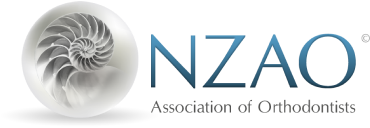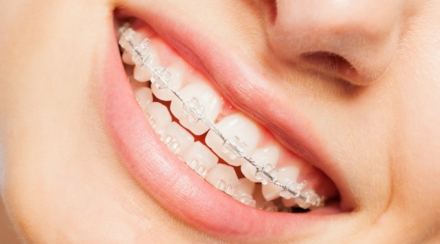In recent years, the concept of do-it-yourself (DIY) aligners for teeth straightening has gained significant popularity with those seeking a convenient and perceived “cost-effective” alternative to traditional orthodontic treatment.
In New Zealand, as in other parts of the world, this trend has many people looking for answers.
Some companies offer products that straighten customers’ teeth, without any face-to-face appointments with an orthodontist. A mould or impression of the teeth taken by the consumer with a kit purchased online, or a digital scan of the teeth can be obtained by non-dental staff at a brick-and-mortar store. These impressions or scans are then used to manufacture clear aligners (more information about clear aligners can be found here).
The New Zealand Association of Orthodontists (NZAO) is committed to delivering a high standard of care for the oral health of New Zealanders and would like potential consumers to be aware of the potential risks that you may be exposed to by using these products.
So, let’s dive deeper into DIY orthodontic treatment so that you can make a more informed decision about this treatment option.
What are DIY aligners?
These are orthodontic devices designed for at-home use, typically without the direct supervision of a specialist orthodontist (although most companies will claim some type of supervision). The growing popularity of at-home teeth straightening solutions cannot be denied. Many Kiwis are attracted to the idea of addressing their orthodontic issues discreetly and on their own terms.
They offer the allure of achieving a straighter smile without the need for frequent in-person visits to an orthodontic clinic. However, the convenience and lower cost of DIY aligners must be weighed against potential safety concerns.
Safety Concerns
Moving teeth can be complicated and involve risks to the supporting structures if not supervised adequately. Before undergoing orthodontic treatment, a specialist orthodontist will collect comprehensive records of the patient’s bite. This includes a clinical examination and history, at least two types of X-rays, photographs of the teeth and face, and a digital scan of the teeth.
After collecting this information, a specialist orthodontist will then formulate a diagnosis and treatment plan including the risks specific to the case. The decision to pursue teeth straightening at home does involve an element of “flying blind” which is important to consider. Remember to ask yourself: Is price your only concern?
“Poorly done teeth straightening can affect people for the rest of their lives. It is not uncommon for people to end up losing teeth because of poorly done orthodontic treatments.”
Comparison of DIY Aligners and Professional Orthodontic Treatment
| DIY Aligners | Orthodontic Treatment | |
| Supervision and Expertise | Self-administered, without direct supervision from a qualified orthodontic professional. This lack of supervision can have implications for the safety and effectiveness of treatment. | Orthodontic treatment in New Zealand is conducted under the close supervision of experienced orthodontists or dentists who have undergone extensive training in orthodontics. Their expertise ensures a higher level of safety and precision in the treatment process. |
| Treatment Planning and Customization | A one-size-fits-all approach that does not account for individual variations in tooth alignment, bite issues, or specific dental conditions. | Specialist orthodontic treatment involves a comprehensive assessment of the patient’s oral health and orthodontic treatment need. Treatment plans are formulated to address the unique needs of each patient. |
| Access to Advanced Techniques | Limited treatment options and often not be suitable for complex orthodontic cases. | Orthodontists have access to a wide range of advanced techniques and appliances, including traditional braces, clear braces, and clear aligners (such as Invisalign). This allows them to tackle a broader spectrum of orthodontic issues. |
| Safety and Accountability | Lack of regulation and no avenues if things do not go as planned. Higher risk of complications and potential harm. Limited supervision and expertise. | Regulated specialty by the Dental Council of New Zealand. Complications can be managed appropriately if they arise. Highly trained and continued education. |
As you can imagine, DIY orthodontic treatment frequently results in less than desirable results, leading to disappointment and frustration. Ask any orthodontist and they will tell you that patients who have undergone DIY treatment more often than not require remedial treatment due to suboptimal outcomes.
Unsurprisingly, several DIY aligner companies have gone out of business in recent years leaving their customers high and dry. The Benjamin Franklin quote comes to mind: “The bitterness of poor quality remains long after the sweetness of low price is forgotten”.
“Orthodontists see a steady stream of people who are having problems with, or are dissatisfied with the results of non-specialist orthodontic treatments.”
Why Choose a Specialist Orthodontist?
All orthodontists have completed a five-year dentistry degree and then undergone a 3 year full-time postgraduate qualification in orthodontics.
Specialist orthodontists take a carefully planned, individualised approach for each patient. They also evaluate the position of the teeth and the jaws relative to the face, the lips, and to other facial soft tissues. They make a comprehensive evaluation of the patient’s overall oral health status while assessing all the conditions that can interfere with tooth movement. They often work with other dentists and specialists to ensure optimal patient outcomes.
Research has proved that failure to take these factors into account in the treatment plan may result in unsatisfactory smile aesthetics, improper jaw function, and consequently a reduced quality of life.
“Getting it right is highly complex and each patient requires an individualised plan. Orthodontists complete intensive postgraduate training to optimise outcomes and ensure patient safety.”
Conclusion
There’s an old saying that you get what you pay for. This has never been more true than with orthodontic treatment. DIY may be cheaper initially, but it could end up being a lot more expensive in the long run when things go to not go as planned.
We recommend getting in touch with a specialist orthodontist to assess your individual needs and give yourself the best chance of a safely obtaining the new smile you’ve always dreamed of.
Disclaimer: The information provided in this article is for educational purposes only and does not substitute professional advice. Please consult with a qualified orthodontist for personalized recommendations and treatment options.




